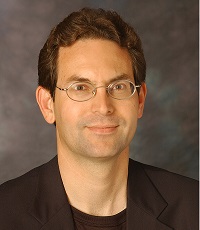 By John Halamka, MD
By John Halamka, MD
Twitter: @jhalamka
My blog readers must think I’ve abandoned them over the past few weeks. I apologize for the whirlwind of October and November. With the BIDMC-Lahey merger planning and the new cloud hosted Meditech go lives of my day job, plus the usual Fall conference commitments, and my new work with the Gates Foundation, blogging has fallen behind.
The Gates Foundation has a bold plan for Africa – unifying the health records of the continent using biometrics, simple phone apps, and a highly resilient low bandwidth cloud that includes data integrity components based on blockchain.
Here’s the use case – patients with HIV are medicated and then monitored for viral suppression using Viral Load lab tests drawn 6 months after therapy begins. This process requires accurate patient matching between clinic visits, which might occur at different locations and with different care providers.
In the US, exact matching of demographics works about 60% of the time. Probabilistic models work about 80% of the time. South Africa has a similar experience. The end result is that many lab tests are redundant and wasteful. Measuring outcomes is challenging. Closing the loop for followup may be impossible. Biometrics can improve matching to 99%, improving quality, safety and efficiency.
South Africa has a “90/90/90” national strategy – 90% of HIV positive patients should know they are HIV positive. 90% of those should be on anti-retroviral medication. 90% of those should have documented viral suppression with viral load tests.
I’ve joined an amazing multi-disciplinary team that includes the Gates Foundation, biometric engineers, app developers, usability experts, cloud database/blockchain innovators, and security professionals.
Over the course of 5 days we met with government, academic, and industry leaders throughout South Africa to plan a 2018 pilot of a nationwide patient matching strategy. We’ve devised objective metrics for success that include improvements in patient and provider satisfaction as well as reductions in total medical expense.
I’ve written about the Perfect Storm for Innovation. South Africa has all the ingredients – senior leadership of top government healthcare leaders, a guiding coalition of people to oversee the work, appropriate resources to do the work, and an urgency to innovate. I’m hoping that the work in Africa will demonstrate how a nationwide patient matching strategy can work, serving as a model for the world, including the US which continues to struggle i.e. CHIME cancelled its patient matching challenge.
The South African people are amazingly kind and helpful. The National Health Laboratory Service has a best in class repository of lab data for the entire country. With Gates funding as a catalyst, I’m convinced we can make a substantial difference in 2018.
In addition to visiting clinics, labs, data centers, hospitals, and IT departments, I had the opportunity to visit an animal sanctuary near the border of Botswana. It’s just like Unity Farm Sanctuary except that instead of pig belly rubs, I gave lion belly rubs. An amazing experience.
John D. Halamka, MD, MS, is Chief Information Officer of Beth Israel Deaconess Medical Center, Chairman of the New England Healthcare Exchange Network (NEHEN), Member of the HIT Standards Committee, a full Professor at Harvard Medical School, and a practicing Emergency Physician. This article was originally published in his blog Life as a Healthcare CIO and is reprinted here with permission.
